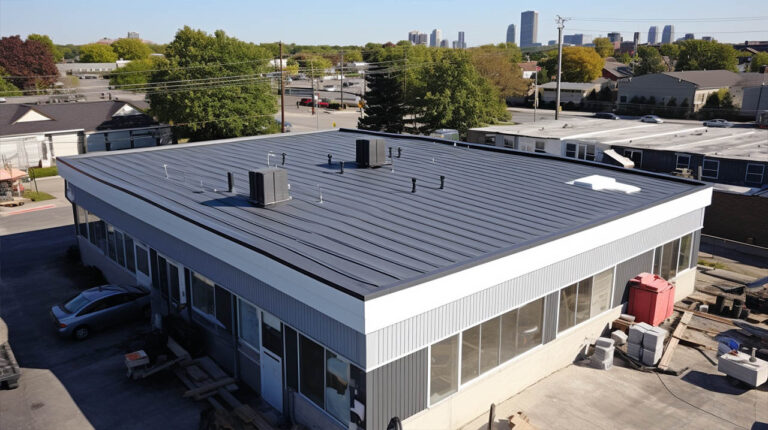When it comes to commercial roofing, understanding the costs involved is crucial for any business. At TecHero Roofing, we believe in transparency and providing our clients with detailed insights into the factors that determine the cost of commercial roofing. Here’s a comprehensive guide to help you navigate the complexities of commercial roofing expenses.
Understanding Costs Per Square Foot
Every commercial establishment, whether large or small, views roof replacement as a significant investment. It’s essential to grasp the average cost per square foot for commercial roofing, encompassing both repairs and replacements.
Factors Influencing Commercial Roof Replacement Costs
1. Roof Type
Commercial roofs primarily fall into two categories:
- Flat (or low slope)
- Slanted
For flat roofs, single-ply rooftops or built-up asphalt roofing are often the best materials. Single-ply roofs, despite having just one layer, are known for their durability and often come with a 25- to 30-year warranty. They are typically more cost-effective and quicker to install than other flat roofing materials.
2. Accessibility of the Roof
The ease of accessing the roof can significantly impact the replacement costs. Factors to consider include:
- Building height
- Storage areas for materials
- Building occupancy
- Proximity to the main road
For instance, re-roofing a 20-story building will invariably cost more than a 2-story structure due to the need for specialized equipment like cranes.
3. Underlying Structures
Beneath every finished rooftop lies a combination of:
- Roof framework (steel, wood, or concrete)
- Cladding
- Insulation
- Other foundational component
The condition of these elements can influence the overall cost. For example, if there’s extensive moisture damage, the price will inevitably rise.
4. Fastenings and Environmental Factors
The type of fasteners required for your roof largely depends on the building’s location, prevailing weather conditions, and local building codes. For instance, buildings in areas prone to high winds might need stronger adhesives.
5. Compliance with Building Codes
Apart from fasteners, commercial structures might need to adhere to various local, state, and federal building codes. These can influence factors like elevation, ventilation, insulation, and noise control.
Average Costs of Different Commercial Roof Types
Single-Ply Membrane Roofs
Comprising rubber and other synthetic materials, single-ply membranes offer a protective layer on commercial rooftops. They are among the most popular roofing solutions and come in various types to suit different needs.
Metal Roofing
Predominantly made of perforated and alloy steels, metal roofing is lightweight, making it easy to install over existing roofs. They also come with coatings that offer UV resistance, waterproofing, and rust prevention.
Shingle Roofing
Primarily used in residential structures, shingles are also occasionally used in commercial roofing for sloped structures. They can be made from various materials, including aluminum, wood, stone, clay, and composites.
Built-Up Roofing
Also known as asphalt and gravel roofs, built-up roofing involves alternating layers of specific fabrics with asphalt. The final layer typically consists of gravel or stone.
TecHero Roofing: Your Trusted Partner in Encino
At TecHero Roofing, we pride ourselves on being one of the leading roofing companies in Encino. Whether you’re looking for roof repair in Encino or seeking a comprehensive roofing service in Encino CA, our team of dedicated Encino roofers is here to assist. With our expertise and commitment to quality, we aim to provide the best roofing solutions tailored to your needs.
In conclusion
Understanding the various factors that influence commercial roofing costs can help businesses make informed decisions. Whether it’s a repair or a complete replacement, it’s essential to work with trusted professionals who can guide you through the process and ensure you get the best value for your investment.


